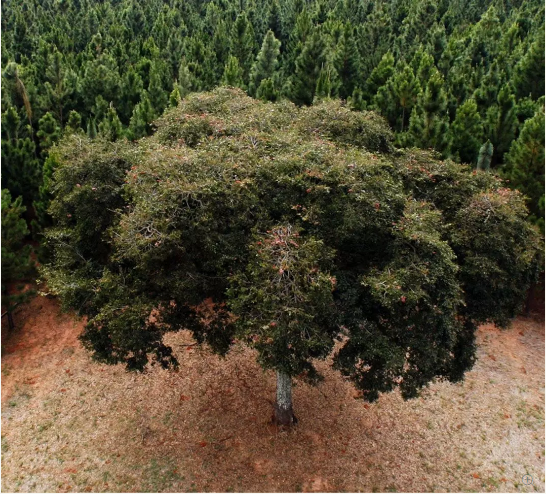Sustainable forestry project in Latin America
Wood is a vitally important resource for Faber-Castell. We therefore have our own wood supply program in place in Brazil to guarantee a sustainable supply of this essential resource for the company in the future. This is a strategically important objective and one of the biggest challenges facing the company in the future. As the world’s biggest single producer of wood-cased pencils, we need up to 150,000 tons of wood every year.


Forestry project Brazil
Around three decades ago, Faber-Castell launched a unique forestry project in Prata, in the state of Minas Gerais in south-east Brazil. Approximately 10,000 hectares of former wasteland, over 2,000 km from the Amazon rainforest, were planted with millions of Pinus caribaea seedlings – a tree species that flourishes in the dry, sandy soil of the Brazilian savannah. In this way, Faber-Castell grows about 20 cubic metres of wood every hour. The pine forests in Brazil are used mainly to supply the world's largest plant in São Carlos (São Paulo state) with a production capacity of around two billion wood-cased pencils per year.

Protecting biodiversity
Around a third of the company's own forests in Prata, spanning approximately 10,000 hectares in total, is left untouched. The forests are not only used to supply wood, but also help to protect the diversity of species, ecosystems and genetic diversity. With this approach, we are helping to protect a large number of animal and plant species, some of which are in danger of extinction, by offering them a unique habitat.
In 2001, we launched the two biodiversity programs "Arboris" and "Animalis", which regularly analyse the progress of the biological diversity in the company's own Brazilian forests. The "Animalis" project is probably the most visible part of the environmental protection program. An annual record of the different animal species is kept based on observations, camera recordings and footprints. This provides important information for sustainable forest management and environmental research aspects in the area and helps us to optimize species protection. The number of registered species has grown continuously since the recordings were started. The area now provides a habitat for around 64 species of mammal, 237 species of bird and 60 species of reptile and amphibian. The number of bat species has also been monitored since 2013.
As part of the "Arboris" project, more than 40,000 local trees and other agricultural plants have been planted in the reserve areas of the plantation to date, which are designed to help establish and promote the natural flora. However, the goal of the project isn't just to help preserve the native plant life, but also to help create a natural pest control in the forests with the diverse insect population living on the plants. It also helps to preserve the high quality of water and soil in the area and provides protection from erosion.
In 2001, we launched the two biodiversity programs "Arboris" and "Animalis", which regularly analyse the progress of the biological diversity in the company's own Brazilian forests. The "Animalis" project is probably the most visible part of the environmental protection program. An annual record of the different animal species is kept based on observations, camera recordings and footprints. This provides important information for sustainable forest management and environmental research aspects in the area and helps us to optimize species protection. The number of registered species has grown continuously since the recordings were started. The area now provides a habitat for around 64 species of mammal, 237 species of bird and 60 species of reptile and amphibian. The number of bat species has also been monitored since 2013.
As part of the "Arboris" project, more than 40,000 local trees and other agricultural plants have been planted in the reserve areas of the plantation to date, which are designed to help establish and promote the natural flora. However, the goal of the project isn't just to help preserve the native plant life, but also to help create a natural pest control in the forests with the diverse insect population living on the plants. It also helps to preserve the high quality of water and soil in the area and provides protection from erosion.

